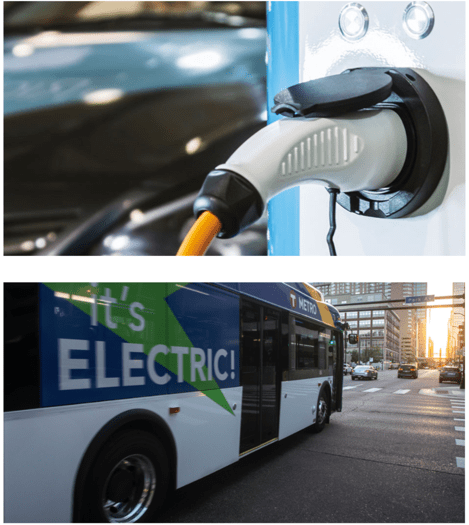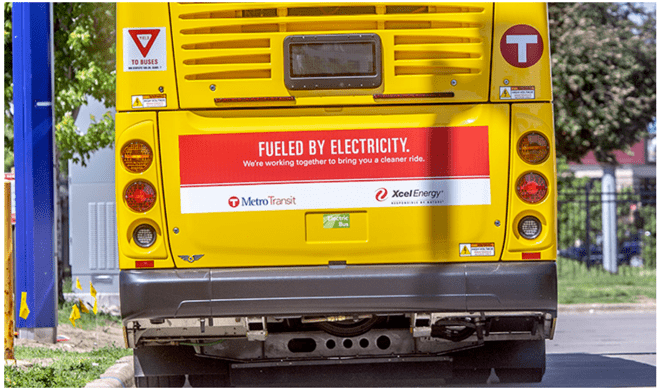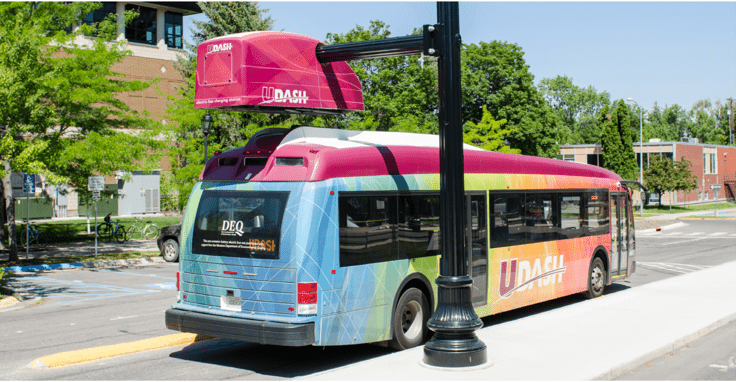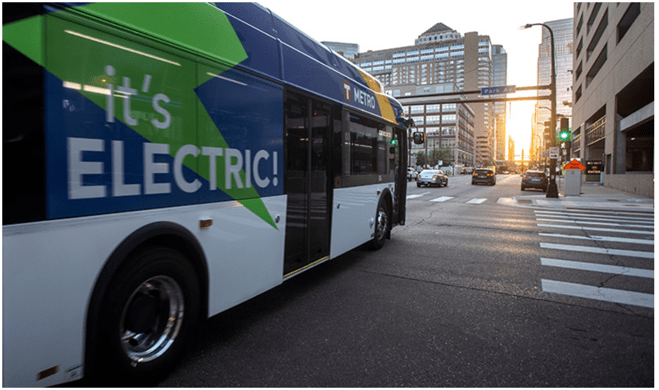
EXPERTS TALK
May 14, 2020
Experts Talk is an interview series with technical leaders from across our transportation program.
How to Head Off Problems and Get the Most Efficiency Out of an Electric Fleet Conversion
Converting to all-electric bus fleets can help get us closer to a zero emission future, but the process is complicated. The conversion affects everything from infrastructure and operations to workforce development, and it often requires forging a new relationship with the local utility company. Meanwhile, battery technology is changing rapidly, so what isn’t feasible today could be possible tomorrow. The key is to be ready and have a workable plan.
 Harpal Kapoor has more than four decades of experience with transit agencies in executive management and as a consultant, helping them implement these types of fleet conversions and changing their profiles. In this interview he provides a road map for how to approach an electric fleet conversion and discusses some of the challenges that often appear during the process. Contact Harpal Kapoor for more information on converting to an electric bus fleet.
Harpal Kapoor has more than four decades of experience with transit agencies in executive management and as a consultant, helping them implement these types of fleet conversions and changing their profiles. In this interview he provides a road map for how to approach an electric fleet conversion and discusses some of the challenges that often appear during the process. Contact Harpal Kapoor for more information on converting to an electric bus fleet.
Q. What should fleet owners consider before they start making the conversion to an electric fleet?
A. Battery electric bus (BEB) and fuel-cell electric bus (FCEBs) are still evolving technologies and have different operational and maintenance characteristics than traditional diesel vehicles or other alternatively fueled vehicles (i.e., CNG). In particular, charging or fueling infrastructure requirements are significantly different and can vary substantially based on operating conditions unlike conventional vehicles. I’d recommend that fleet owners develop a conversion “road map” that considers all of these factors prior to the purchase of their first vehicle. They need an investment and operating plan for the entire average12-year life cycle for their electric bus fleet.
 Adoption of the road map begins with establishing a vision which is consistent with the agency’s goals and the regulatory environment in which it must function. The effort then moves to research and planning to develop a clear understanding of what technology is available and how it will or will not work in achieving operating objectives. Create a fundamental foundation to inform future decisions.
Adoption of the road map begins with establishing a vision which is consistent with the agency’s goals and the regulatory environment in which it must function. The effort then moves to research and planning to develop a clear understanding of what technology is available and how it will or will not work in achieving operating objectives. Create a fundamental foundation to inform future decisions.
Q. How can fleet owners create a smooth transition to electric?
A.Understanding the technology and its gaps in the early stages is the first step — it all comes back to the road map. This road map should cover all aspects of the process, including an analysis of the expected routes (length, gradients, number of stops, etc.), ambient temperatures, expected passenger loads and other data to characterize the parameters under which an electric vehicle needs to operate. At HDR, our team has developed the Zero+ Fleet Optimizer, a GIS-based modeling tool that’s cross-layered with operational fleet data to provide superior operating, charging and energy cost scenarios.
Once route-specific data is established, we can develop a charging profile for the entire fleet. A clear understanding of fleet power requirements is the foundation for a strategy of data-driven decisions and negotiations with the local utility company. This in turn allows utility companies to plan the upgrades to their grid systems to meet the power demand.
There are a lot of moving parts in this technology, and successful transition is based on smart planning with modeling tools, selection of the right technologies (vehicle and charging) and working with the utility companies for a scaled-up operation— starting the transition from a fleet of 5-10 vehicles to the entire fleet of 100 or above.
Q. What are some common issues with converting a fleet to electric vehicles?
A. The issues vary for each transit agency based on their geographical locations, past technology used and the duty cycles. While studying the pilot testing of buses in early deployments with transit agencies like WMATA in D.C. and MBTA in Boston, I found that electric buses did not provide a one-to-one replacement of a diesel bus.
Some of the issues that transit agencies need to consider include:
• Electric buses have a range based on varying geographical terrain, passenger load and ambient temperatures. This has a huge impact as the agencies will need to define new ways to meet service demands balanced by recharging intervals.
• When buses have to be brought back to the depot for charging in the daytime, that likely uses power at the peak rate, which will increase the agency’s costs.
• The installation of an en-route charging system on the street requires special permits and approvals from the local municipalities, which can add to the project timeline.
• Scaling up the number of buses to accommodate range and power requirements adds cost for the infrastructure, as more buses are charged at the same time.
• Electrification requires new training of the workforce on safety and maintenance of the battery technology and the high-voltage charging systems.
• Transit agencies often need help working with the power and utility companies in the early planning stages of fleet conversions.

Q. How does conversion to an electric fleet affect the workforce?
A. Workforce development is a major issue. Transit is expecting 30-40% of its current workforce to be eligible
for retirement in the next two to three years. Layering on adoption of new technology will require a major investment in training for employees across the board, from those who will be charging the buses in the depot, to the mechanics and bus operators. This will change the entire face of workforce as we need technicians with troubleshooting and repair skills

to understand the complex propulsion and control systems as well as electricians who can work on high-voltage systems. To accommodate these changes, transit agencies might have to pay more for these new skillsets and certifications. Additionally, employees will now be working around high- voltage equipment, so new and improved safety policies, procedures and protective equipment will be required. Some agencies that also operate electrically driven rail systems will have experience that can carry over to the electric bus program.
Q. What technology is coming down the pike that will affect electric vehicle capacity and range?
A. The battery is the heart of the electric bus. It’s a rapidly changing technology that is gradually bringing down electric bus costs, while extending the average duty cycle. The goal for manufacturers and transit agencies is to extend the range of vehicles without adding extra batteries, thereby making them more efficient. Manufacturers are currently working to improve the energy output, storage capacity and density in batteries without adding significant weight through the use of alternative battery chemistries such as nickel-manganese cobalt lithium-ion and lithium-iron phosphate. The solid state battery is in currently development stage, and in the future this investment will help address the current challenges with the efficiency, range and weight of the batteries.
New charging systems could also offer solutions to improve range. En-route charging stations have been designed to
fast charge a huge bank of on-board batteries while buses dwell at stations to receive passengers. Wireless inductive fast charging systems using magnetic fields to transfer power between two coils of wire (one on the bus and the other under the roadway surface) over an air gap with no physical connection are also being tested. This makes it easier to charge the bus en-route, or in the depot at designated inductive charge zones.
FCEB technology has made tremendous progress, benefitting from advances in battery electric technology. Recently introduced FCEBs with a battery dominant configuration have exceeded 350 miles with a single fueling in depot. That meets the criteria for a typical transit agency’s duty cycle. Also, the ambient temperature has no major impact on the range of a FCEB. The cost of FCEBs and hydrogen fuel are coming down as the two technologies compete to reduce the total life cycle cost and improve their range to better match conventional vehicles.
It is an exciting time, and I foresee that a combination of these two technologies will be used by transit agencies in achieving zero emissions mandates. BEBs can be used during a transition period on shorter routes, and FCEBs can be used for heavily loaded and longer routes, all the while generating more operating and performance data to continuously improve their designs.

Inspiration & Advice
Q. How did you become interested in fleet electrification?
A. My father was a chief engineer in India. In middle school, during the summer vacations, he took me to the sites where he was working on deep water drilling. Those huge rigs had Caterpillar engines, generators and other mechanical parts which intrigued me. At that time, I thought of studying mechanical engineering. After college I had several jobs designing transmissions and hydraulic systems for heavy earthmoving machines, and I landed in the USA working on trains and buses.
As a reliability engineer working for a transit agency, I studied the failures of hydraulic systems for bus radiator fans that caused bus fires when the hoses failed and sprayed oil on a hot engine. In 1998, I updated the design of a bus cooling system by using electric motors, as one of the alternator manufacturers came out with a large 450 ampere alternator driven by the engine. There were many challenges, but our team was able to successfully run the tests and got approval to retrofit more buses.
After this success, there was no stopping in electrification of buses. I have worked with bus manufacturers in electrifying the air conditioning system driven by a generator. Then the hybrid- electric buses made it much easier to electrify all the other accessories like radiator fans, doors, air compressor and steering system. Currently at HDR, I’m working as a consultant to an equipment manufacturer in electrifying all the accessories on diesel and CNG buses.
It’s an exciting time to be involved with testing, validation and exploring opportunities for battery-electric and fuel cell technologies in real world situations while giving feedback to the bus manufacturers to improve their designs.
Q. What advice do you have for someone just starting to work in the transit field?
A. Transit is going through a major evolution due to the introduction of new technologies like battery-electric, hydrogen fuel cells, connected and autonomous vehicles. It is a challenging yet exciting time and if you want to roll up your sleeves and have the hunger to learn, then jump in. You should not be scared to ask what you might think is a “stupid question”. Question- and-answer is the only way to learn about new systems and applications. I learned the most from front line workers like the mechanics and technicians who work on the problems every day. Hands-on experience will give you confidence and the ability to experiment. I had a few challenges with several engineering designs but with support from the management and mechanics, I was able to deliver. Those challenges serve as lessons learned and will propel you to future success.
Experts Talk is an interview series with technical leaders from across our Transportation program. Each interview illuminates a different aspect of transportation infrastructure planning, design and delivery. Contact HDRTransportation@hdrinc.com for more information. Visit www.hdrinc.com/insights regularly to gain insights from specialized experts and thought leaders behind our award-winning, full service consulting practice.
Experience Power…Experience Vanner!
More Information: info@vanner.com
Follow Us on Twitter: @VannerInc

